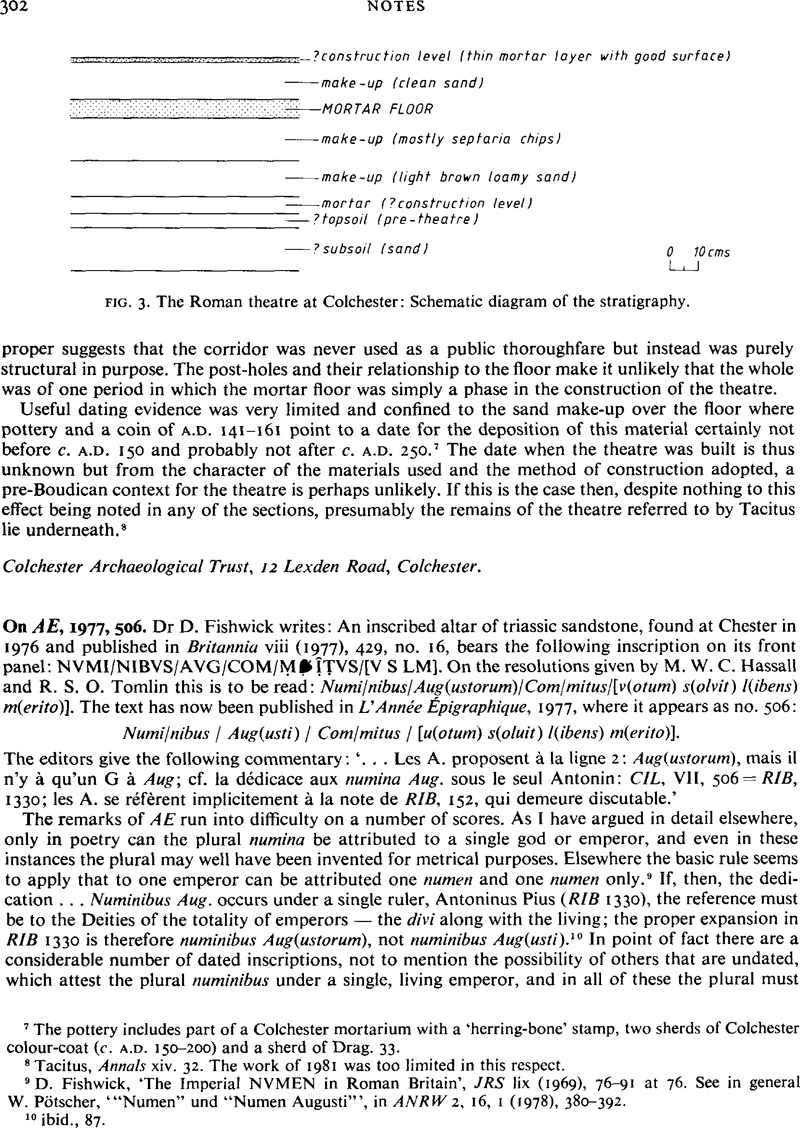No CrossRef data available.
Article contents
On AE, 1977, 506
Published online by Cambridge University Press: 09 November 2011
Abstract

- Type
- Notes
- Information
- Copyright
- Copyright © D. Fishwick 1982. Exclusive Licence to Publish: The Society for the Promotion of Roman Studies
References
11 Fishwick, D., ‘Numina Augustorum,’ Classical Quart, xx (1970), 191–7CrossRefGoogle Scholar.
12 Above, note 9, 79 ff.
13 R. E. M. Wheeler, Verulamium, A Belgic and Two Roman Cities (Reports of the Research Committee of the Soc. of Antiquaries no. xi, 1936).
14 For examples of Roman medical and surgical instruments found in Britain, see Allason-Jones, L., ‘Two Unrecognized Roman Surgical Instruments’, Arch. Ael. vii (1979), 239–41Google Scholar; Thomas, P. H., ‘Graeco-Roman Medical and Surgical Instruments’, Journal College General Practitioners 6 (1963), 495–502Google ScholarPubMed; Gilson, A. G., ‘A Group of Roman Surgical and Medical Instruments from Corbridge’, Saalburg-Jahrbuch 37 (1981), 5–9Google Scholar.
15 J. S. Milne, Surgical Instruments in Greek and Roman Times (1907), 11.
16 See especially the important article, Hassel, F. J. and Künzl, E., ‘Ein römisches Arztgrab des 3. Jahrhunderts n. Chr. aus Kleinasien’, Medicinhistorisches Journal 15 (1980), 403–21. This includes a comprehensive reference of Roman surgical and medical instruments found in doctor's graves, throughout the Roman Empire, from the first century B.C. to the third A.D.Google ScholarPubMed




